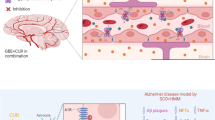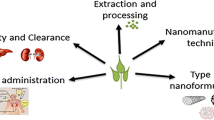Abstract
Cortexin is a clinically approved cerebral cortex polypeptide complex in calves. The mechanism of cortexin action is not understood well. Two cortexin derivatives, short peptides EDR and DS with neuroprotective activity, were synthesized. According to the data of molecular modeling, these peptides are able to bind to the histone H1.3 protein. This can affect the conformation of histone H1.3, which leads to a change in the chromatin structure in the loci of some genes, in particular Fkbp1b encoding the FK506-binding protein. Electrophysiological processes associated with the Ca2+ exchange are disturbed in the pyramidal neurons of the hippocampus during aging of the brain. The Fkbp1b gene encodes peptidyl-prolyl cis-trans isomerase, regulating the release of calcium ions from the sarcoplasmic and endoplasmic reticulum of neurons. The activation of the Fkbp1b gene transcription under treatment with short peptides can promote the synthesis of its protein product and the activation of the Ca2+ release from organelles of the sarcoplasmic and endoplasmic reticulum of neurons, which, in turn, can lead to an increase in the functional activity of neurons.


Similar content being viewed by others
REFERENCES
Anisimov V.N., Khavinson V.Kh. 2010. Peptide bioregulation of aging: Results and prospects. Biogerontology. 11 (2), 139‒149.
Khavinson V.Kh. 2014. Peptides, genome, aging. Adv. Gerontol. 4 (4), 337–345.
Khavinson V.Kh., Kunik B.I., Ryzhak G.A. 2012. Peptide bioregulators, a new class of geroprotectors: 1. Results of experimental studies. Usp. Gerontol. 25 (4), 696‒708.
Khavinson V.Kh., Korkushko O.V., Shatilo B.V., Antonyuk-Shcheglova I.A. 2011. A peptide geroprotector from the epiphysis retards accelerated aging in elderly persons. Byull. Eksp. Biol. Med. 151 (3), 366‒369.
Khavinson V.Kh., Grigoriev E.I., Malinin V.V., Ryzhak G.A. 2008. Eurasian Patent EA 010157.
Morozov V.G., Ryzhak G.A., Malinin V.V., Rutkovskaya V.N. 2011. Tsitogeny. Biologicheski aktivnye dobavki k pishche: Metod. rekomendatsii (Cytogens: Biologically Active Dietary Supplements. Methodological Guidelines). St. Petersburg: Kosta.
Balashova S.N., Zhernakov G.L., Dudkov A.V. 2008. Applications of peptide bioregulators in elderly persons with psychoemotional disturbances. Usp. Gerontol. 3 (21), 448–452.
Arutjunyan A., Kozina L., Stvolinskiy S. 2012. Pinealon protects the rat offspring from prenatal hyperhomocysteinemia. Int. J. Clin. Exper. Med. 2 (5), 179–185.
Khavinson V., Ribakova Y., Kulebiakin K. 2011. Pinealon increases cell viability by suppression of free radical levels and activating proliferative processes. Rejuvenation Res. 5, 535–541.
Umnov R.S., Lin’kova N.S., Khavinson V.Kh. 2013. Neuroprotective effects of peptide bioregulators in persons of different ages: A review. Usp. Gerontol. 4 (26), 671‒678.
Khavinson V., Linkova N., Kukanova E., Bolshakova A., Gainullina A., Tendler S., Morozova E., Tarnovskaya S., Vinski D.S.P., Bakulev V., Kasyanenko N. 2017. Neuroprotective effect of EDR peptide in mouse model of Huntington’s disease. J. Neurol. Neurosci. 1(8), 1‒11.
Krasovskaya N.A., Kukanova E.O., Lin’kova N.S., Popugaeva E.A., Khavinson V.Kh. 2017. Tripeptides restore the numbers of neuronal spines in an in vitro model of Alzheimer’s disease. Klet. Technol. Biol. Med. 2, 101‒104.
Fedoreyeva L.I., Smirnova T.A., Kolomiitseva G.Ya., Khavinson V.Kh., Vanyushin B.F. 2013. Interaction of short peptides with FITC-labeled wheat histones and their complexes with deoxyribooligonucleotides. Biochemistry (Moscow). 78 (2), 166‒175.
Labute P. 2010. LowModeMD: Implicit low-mode velocity filtering applied to conformational search of macrocycles and protein loops. J. Chem. Inf. Model. 50, 792‒800.
Case D.A., Darden T.A., Cheatham T.E. 2012. AMBER 12. San Francisco: Univ. of California Press.
Edelsbrunner H., Facello M., Fu R., Liang J. 1995. Measuring proteins and voids in proteins. In: Proc. 28th Hawaii Int. Conf. on Systems Science, pp. 256–264.
Soga S., Shirai H., Kobori M., Hirayama N. 2007. Use of amino acid composition to predict ligand-binding sites. J. Chem. Inf. Model. 47, 400‒406.
Khachaturian Z.S. 1989. The role of calcium regulation in brain aging: Reexamination of a hypothesis. Aging (Milan). 1, 17–34.
Disterhoft J.F., Thompson L.T., Moyer J.R., Mogul D.J. 1996. Calcium-dependent afterhyperpolarization and learning in young and aging hippocampus. Life Sci. 59, 413–420.
Landfield P.W., Pitler T.A. 1984. Prolonged Ca2+-dependent after hyperpolarization in hippocampal neurons of aged rats. Science. 226, 1089–1092.
Moyer J.R., Thompson L.T., Black J.P., Disterhoft J.F. 1992. Nimodipine increases excitability of rabbit CA1 pyramidal neurons in an age- and concentration-dependent manner. J. Neurophysiol. 68, 2100–2109.
Gant J.C., Sama M.M., Landfield P.W., Thibault O. 2006. Early and simultaneous emergence of multiple hippocampal biomarkers of aging is mediated by Ca2+-induced Ca2+ release. J. Neurosci. 26, 3482–3490.
Lancaster B., Hu H., Ramakers G.M., Storm J.F. 2001. Interaction between synaptic excitation and slow afterhyperpolarization current in rat hippocampal pyramidal cells. J. Physiol. 536, 809–823.
Andrade R., Foehring R.C., Tzingounis A.V. 2012. The calcium-activated slow AHP: Cutting through the Gordian knot. Front. Cell Neurosci. 6, 47.
Voglis G., Tavernarakis N. 2006. The role of synaptic ion channels in synaptic plasticity. EMBO Rep. 7, 1104‒1110
Tombaugh G.C., Rowe W.B., Rose G.M. 2005. The slow afterhyperpolarization in hippocampal CA1 neurons covaries with spatial learning ability in aged Fisher 344 rats. J. Neurosci. 25, 2609–2616.
Luebke J.I., Amatrudo J.M. 2012. Age-related increase of sI(AHP) in prefrontal pyramidal cells of monkeys: Relationship to cognition. Neurobiol. Aging. 33, 1085–1095.
Zalk R., Lehnart S.E., Marks A.R. 2007. Modulation of the ryanodine receptor and intracellular calcium. Annu. Rev. Biochem. 76, 367–385.
Gant J.C., Chen K.C., Norris C.M., Kadish I., Thibault O., Blalock E.M., Porter N.M., Landfield P.W. 2011. Disrupting function of FK506-binding protein 1b/12.6 induces the Ca2+-dysregulation aging phenotype in hippocampal neurons. J. Neurosci. 5, 1693‒1703.
Gant J.C., Blalock E.M., Chen K.C., Kadish I., Porter N.M., Norris C.M., Thibault O., Landfield P.W. 2014. FK506-binding protein 1b/12.6: A key to aging-related hippocampal Ca2+ dysregulation? Eur. J. Pharmacol. 739, 74‒82.
Anwer H., Vinit K., Rohini P., Hirokuni A., Qi C. 2013. Sirolimus-FKBP12.6 impairs endothelial barrier function through protein kinase C-α activation and disruption of the p120-vascular endothelial cadherin interaction. Arteriosclerosis, Thromb. Vasc. Biol. 10, 2425‒2431.
Prevel N., Allenbach Y., Klatzmann D., Salomon B., Benveniste O. 2013. Beneficial role of rapamycin in experimental autoimmune myositis. PLoS One. 8 (11), e74450.
Oshiro N., Yoshino K., Hidayat S., Tokunaga C., Hara K. 2004. Dissociation of raptor from mTOR is a mechanism of rapamycin-induced inhibition of mTOR function. Genes Cells. 4, 359‒366.
Gant J.C., Chen K.C., Kadish I., Blalock E.M., Thibault O., Porter N.M., Landfield P.W. 2015. Reversal of aging-related neuronal Ca2+ dysregulation and cognitive impairment by delivery of a transgene encoding FK506-binding protein 12.6/1b to the hippocampus. J. Neurosci. 35, 30.
Gant J.C., Blalock E.M., Chen K.C., Kadish I., Thibault O., Porter N.M., Landfield P.W. 2017. FK506-binding protein 12.6/1b, a negative regulator of [Ca2+], rescues memory and restores genomic regulation in the hippocampus of aging rats. J. Neurosci. 38 (4), 1030–1041.
Fedoreyeva L.I., Kireev I.I., Khavinson V.Kh., Vanyushin B.F. 2011. Penetration of short fluorescence-labeled peptides into the nucleus in HeLa cells and in vitro specific interaction of the peptides with deoxyribooligonucleotides and DNA. Biochemistry (Moscow). 76 (11), 1210–1219.
Author information
Authors and Affiliations
Corresponding author
Additional information
Translated by D. Novikova
Abbreviations: CNS, central nervous system; Brn3, brain-specific homeobox-containing transcription factor; CXCL12, chemokine of the CXC subfamily; EDR, pinealon; FK506, rapamycin; FKBP1b, FK506-binding protein 1b; IL-2, interleukin-2; mTORC1, mTOR1 complex; Pax6, aniridia type II protein or oculorhombin; PLB, propensity for ligand binding; Prox1, homeobox-containing protein 1 with Prospero domain; RyR, ryanodine receptor; sAHP, slow K+-dependent hyperpolarization.
Rights and permissions
About this article
Cite this article
Kuznik, B.I., Davydov, S.O., Popravka, E.S. et al. Epigenetic Mechanisms of Peptide-Driven Regulation and Neuroprotective Protein FKBP1b. Mol Biol 53, 299–307 (2019). https://doi.org/10.1134/S0026893319020092
Received:
Revised:
Accepted:
Published:
Issue Date:
DOI: https://doi.org/10.1134/S0026893319020092




